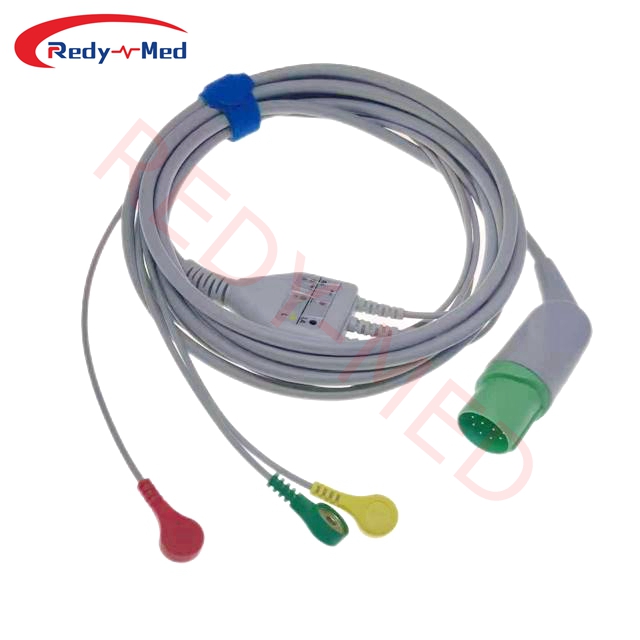
- Home > News > Industry News
Can ECG cables be used for ambulatory monitoring?
2024-03-21 02:09:33
The Role of ECG Cables in Ambulatory Monitoring

Electrocardiography (ECG) cables have long been an essential component in monitoring cardiac activities. Traditionally, ECG cables have primarily been used in clinical settings where patients are immobile. However, recent advancements in technology have raised the question of whether ECG cables can be utilized for ambulatory monitoring, allowing patients to receive continuous ECG monitoring while maintaining their daily activities. This article aims to explore the feasibility and potential benefits of using ECG cables for ambulatory monitoring.
1. Understanding Ambulatory Monitoring
Ambulatory ECG monitoring, also known as Holter monitoring, involves the continuous recording and analysis of a patient's ECG over an extended period, typically 24 to 48 hours or even longer. This method provides valuable insights into the patient's cardiac health and helps diagnose various heart conditions, such as arrhythmias and ischemia, that may not be captured during a traditional ECG test performed in a clinical setting.
2. Challenges with Traditional ECG Cables
Traditionally, ECG cables have been designed for stationary use, with cables connected to the patient's chest via leads. This infrastructure limits mobility, making it unsuitable for ambulatory monitoring. Patients may feel restricted or uncomfortable during their daily activities, leading to inaccurate readings and reducing the effectiveness of the monitoring process.
3. Advancements in Ambulatory ECG Cables
In recent years, several advancements have been made to address the limitations of traditional ECG cables in ambulatory monitoring. Manufacturers have developed wireless ECG systems that eliminate the need for bulky cables and provide greater freedom of movement for patients. These systems utilize small, lightweight sensors attached to the patient's chest, transmitting data to a portable device or cloud-based platform for real-time analysis and monitoring.
4. Benefits of Ambulatory ECG Monitoring
The use of ECG cables for ambulatory monitoring offers various benefits. Firstly, it enables continuous monitoring of the patient's heart activity throughout their daily routine, allowing healthcare professionals to capture irregularities that may occur during specific activities or times of the day. Secondly, ambulatory monitoring provides a more comprehensive assessment of a patient's cardiac health, leading to improved diagnostics and tailored treatment plans. Additionally, patients benefit from increased convenience and comfort compared to traditional monitoring methods.
5. Considerations and Future Directions
Although the use of ECG cables for ambulatory monitoring shows promising potential, there are several factors to consider. These include the cost-effectiveness of implementing wireless monitoring systems, the accuracy and reliability of wireless data transmission, battery life, and patient acceptance of wearing monitoring devices for extended periods. Despite these challenges, ongoing research and development aim to further enhance the capabilities and usability of ECG cables for ambulatory monitoring.
Conclusion
Ambulatory ECG monitoring has revolutionized the way we assess cardiac health. While traditional ECG cables present limitations for ambulatory monitoring, advancements in technology have paved the way for wireless ECG systems that offer greater comfort, mobility, and accurate data transmission. The use of ECG cables for ambulatory monitoring provides a valuable tool for diagnosing and managing cardiac conditions, improving patient outcomes, and enhancing the overall quality of healthcare.
Get the latest price? We'll respond as soon as possible(within 12 hours)




